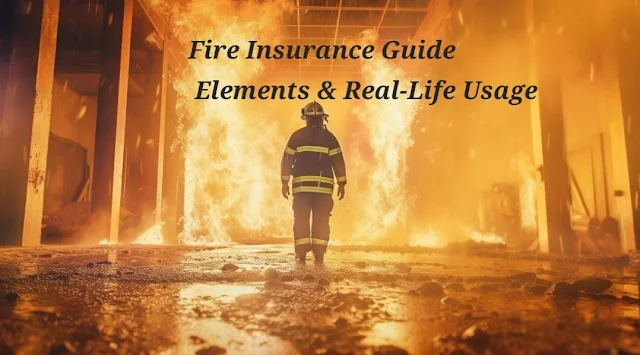Welcome to our comprehensive guide on fire insurance. In this article, we will explore the essential elements of fire insurance, its real-life usage, and how it can protect homeowners and businesses from fire-related risks. Whether you are a property owner or simply looking to gain a better understanding of fire insurance, this guide will provide you with valuable insights. Let's dive in!

|
| Fire Insurance Guide: Elements & Real-Life Usage. |
Key Takeaways:
- Fire insurance is a vital financial safeguard against fire-related risks for homeowners and businesses.
- Understanding the elements of fire insurance, such as coverage, premiums, deductibles, and limits, is crucial when selecting a policy.
- Knowing how fire insurance works in practice, including the process of filing a claim and required documentation, is essential for policyholders.
- Real-life examples can illustrate the practical relevance and benefits of fire insurance in protecting individuals and organizations.
- By obtaining fire insurance, individuals and businesses can gain financial security and peace of mind in the face of fire hazards.
What is Fire Insurance?
In this section, we will delve into the definition of fire insurance. Fire insurance is a form of property insurance that provides coverage against fire-related losses for homeowners and businesses. It serves as a financial safeguard, protecting policyholders from the devastating effects of fire incidents.
Fire insurance is designed to mitigate the financial burden caused by fire damage and loss of property. By paying regular premiums, policyholders can ensure that they have a safety net to rely on in the event of a fire.
The Purpose of Fire Insurance
The primary purpose of fire insurance is to provide compensation for the reconstruction or repair of damaged property due to fire incidents. This includes not only physical structures but also the contents within the insured premises, such as furniture, appliances, and personal belongings.
Fire insurance acts as a vital safety net, ensuring that individuals and businesses do not face overwhelming financial losses in the aftermath of a fire. It provides peace of mind and a sense of security, allowing policyholders to focus on rebuilding their lives and businesses.
Key Characteristics of Fire Insurance
Fire insurance policies typically come with specific characteristics that define their coverage and terms. These may include:
- Premiums: Policyholders pay regular premiums to maintain their fire insurance coverage. The cost of premiums is determined by various factors, such as the value and location of the insured property.
- Deductibles: Deductibles are the out-of-pocket expenses that policyholders must pay before the insurance coverage kicks in. They are usually set at a fixed amount or a percentage of the insured value.
- Limits: Fire insurance policies have coverage limits, which specify the maximum amount that the insurance company will pay for fire-related losses. It is essential for policyholders to understand these limits to ensure adequate coverage.
In addition to these characteristics, fire insurance policies may also offer optional add-ons or endorsements to enhance coverage. These can include coverage for smoke damage, water damage resulting from firefighting efforts, or coverage for additional structures on the property.
Understanding the definition and key characteristics of fire insurance is crucial for individuals and businesses looking to protect their assets from fire-related risks. In the next section, we will explore the essential elements of fire insurance policies in more detail.
